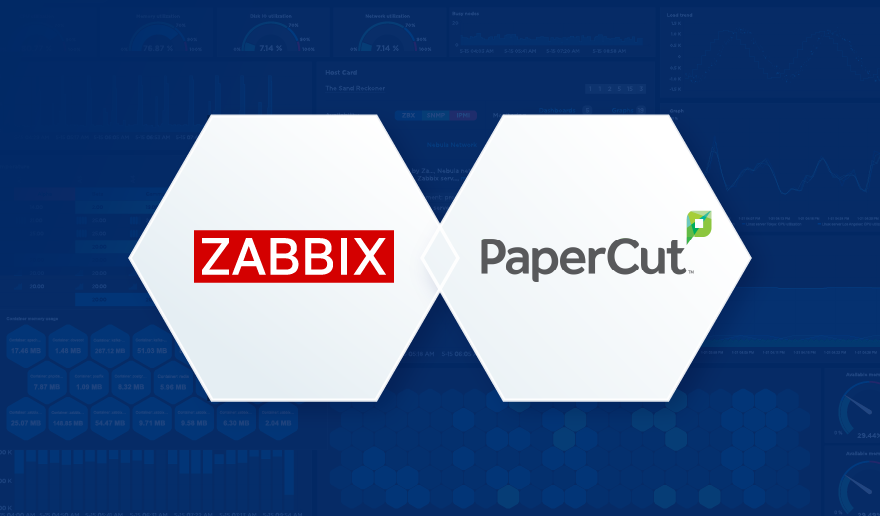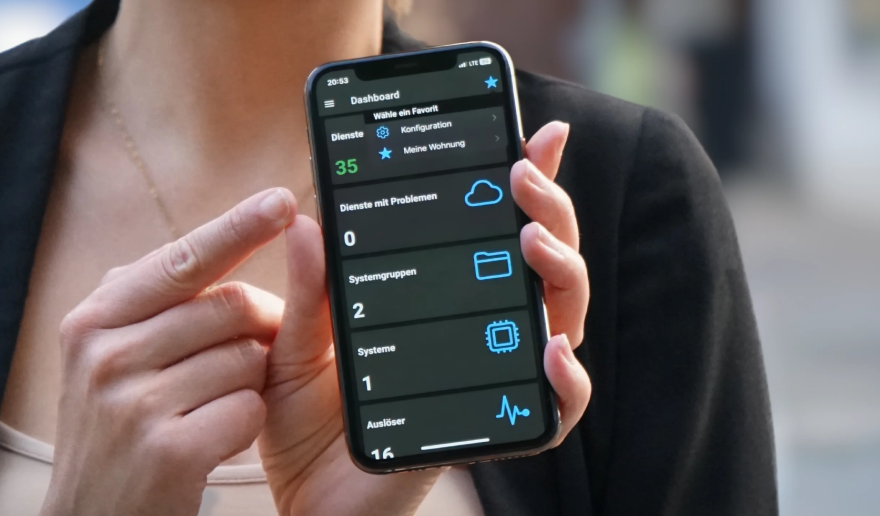Monitoring a Starlink Dish with Zabbix
Curious about keeping tabs on your Starlink internet performance? Whether you're off-grid or just love tracking your network performance, this post has you covered!

Aleksandrs Petrovs-Gavrilovs
Zabbix Certified Expert & Trainer
Latest articles

Keep Your Printers Happy with Zabbix and PaperCut NG

December 23, 2025
Integrations
We all know the panic when the print system goes down. As I’ve written about before, PaperCut NG is a fantastic tool for managing printing, but even the best software needs a watchful eye to prevent unexpected downtime.

Patrik Uytterhoeven
Open-source consultant and
Zabbix trainer at OICTS

Put Zabbix at your Fingertips with the IntelliTrend Mobile App

December 16, 2025
Integrations
The official Zabbix frontend works great on desktop, but it isn’t built for mobile. Monitoring doesn’t end when you step away from your workstation, and a reliable Zabbix mobile app keeps you connected to your Zabbix environment, gives you instant notifications, and allows you to react to problems or just check your host configuration at […]

Wolfgang Alper
CEO, IntelliTrend IT-Services GmbH

Handy Tips #22: Deploying Zabbix in the AWS cloud platform

January 31, 2022
Handy Tips
Deploy a production-ready Zabbix instance in the AWS cloud platform with just a few clicks. With a major paradigm shift to cloud IT infrastructures, many organizations opt-in to migrate their on-prem systems to the Cloud. Zabbix provides official cloud images for the most popular cloud vendors including the AWS cloud platform. Deploy the complete Zabbix […]

Arturs Lontons
Zabbix Certified Expert & Trainer

Zabbix meets television – Clever use of Zabbix features by Wolfgang Alper / Zabbix Summit Online 2021

January 28, 2022
Conferences
TV broadcasting infrastructures have seen many great paradigm shifts over the years. From TV to live streaming – the underlying architecture consists of many moving parts supplied by different vendors and solutions. Any potential problems can cause critical downtimes, which are simply not acceptable. Let’s look at how Zabbix fits right into such a dynamic […]

Wolfgang Alper
CEO, IntelliTrend IT-Services GmbH

Defining flexible problem thresholds with the new trigger syntax by Sergey Simonenko / Zabbix Summit Online 2021

January 25, 2022
Conferences
Introduced in Zabbix 5.4, the new trigger expression syntax enables a problem detection logic that is more sophisticated and flexible than ever before. In addition to changing the syntax, the existing trigger functions have also been reworked. Many new functions have been added, redundant functions have been removed while existing functions have been improved to […]

Sergey Simonenko
Technical Support Engineer at Zabbix

Securing Zabbix 6.0 LTS by Kārlis Saliņš / Zabbix Summit Online 2021

January 21, 2022
Conferences
Security is an essential dimension of any tool in your IT infrastructure, and Zabbix is no exception. With Zabbix 6.0 LTS, our users will be able to secure their Zabbix instance on multiple layers – from encrypting your network communication to flexible user access control, API token provisioning, and custom user password policies. Let’s take […]

Kārlis Saliņš
Technical Support Engineer

Handy Tips #21: Deploying Zabbix Server with Docker containers

January 19, 2022
Handy Tips
Deploy Zabbix components in docker containers for advanced automation, scalability, and maintenance. In the past few years, containers have gained prevalence and are being used for many different tasks – from application development to improving automation and management of existing software. Deploy Zabbix components in Docker containers: Official Docker images are available for individual components […]

Arturs Lontons
Zabbix Certified Expert & Trainer

New Agent 2 features in Zabbix 6.0 LTS by Aigars Kadiķis / Zabbix Summit Online 2021

January 18, 2022
Conferences
Zabbix Agent 2 has been developed to provide additional benefits to our users – From a larger set of supported metrics to metric collection logic improvements and simplified custom monitoring plugin development. Let’s look at what new features Zabbix Agent 2 will receive in Zabbix 6.0 LTS. The full recording of the speech is available […]

Aigars Kadiķis
Technical Support Engineer at Zabbix









